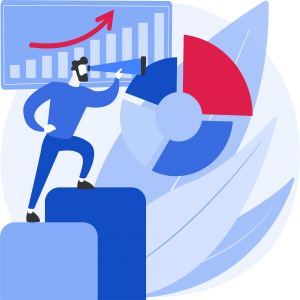FIWOO: Structure your organisation
FIWOO, the first IoT Editor Platform of the market, is an horizontal, open, modular, scalable, robust, secure, interoperable and integrating platform based on FIWARE for the management of applications and services of the IoT.
IoT-Editor implies that the user is the centre of the whole ecosystem. Following the ‘no-code’ philosophy, FIWOO makes its full potential available to you with powerful visual tools and simple wizards that allow you to create verticals and components without launching a single line of code.
FIWARE is an open source initiative backed by European Commission and the universal standard for the development of intelligent solutions and services.
Open Platform
Based on a open source, supported by a large community and endorsed by European Union.
Interoperable
Following international standars and norms.
Secure
Using end-to-end encryption.
Scalability
Modular architecture based on microservices.
User centered
An intuitive, accessible and easy to use platform.
Catalog of indicators
Based on UNE 178202 and UNE-ISO 37120.
Technical Characteristics
Data Acquisition
Device Management
Open Data Management
Device Management.
-
Integration capability with a wide ranges of devices and measurement instrumentation.
-
Connectivity to multiple networks and support of a great variety of communication protocols: OPU-UA, MQTT, HTTPS, Ultralight 2.0, Sigfox, LoRaWan, CoAP, AMQP.
-
Different ways of communication: Polling, asynchronous data collection, by events, status queries and command submission.
-
Template System for the configuration of replicable device models, which facilitate its massive deployment.
-
Link, download and publish open data repositories with different formats (CSV, XML, JSON, GeojSON, KML, …).
-
Preview content of data repositories directly from the platform.
-
Visualization in joint data maps that incorporate coordinates.
-
API REST of different data groups (for CSV or XLS formats).
-
Intake of all type of data and formats.
Open Data Management.
DATA & BIG DATA
Data Privacy Management
Big Data
-
GDPR compliance.
-
Incorporation of new rights of the data’s owners: limitation of processing, portability and the right to forget.
-
Register of data processing activities.
-
Security Measures: BBDD encryption, hard disk encryption and encrypter transfers.
Data Privacy Management.
Big Data.
-
Combination of structured data with multi-structured data in a common model.
-
Tools for data exploitation through “drag & drop” query generation.
-
Creation of different types of analysis: statics reports, maps, network views, interactive cockpits and data/text mining models.
-
Advanced data visualization for insights self-discovery.
WORKFLOW
Users Management
Security
Users Management.
-
Users and unlimited user groups.
-
User groups management through hierarchical model.
- Unlimited role definition for permission management.
-
LDAP integration.
-
Audit, logging and monitoring (Stack ELK, ElasticSearch, LogStash and Kibana)
-
Bug Tracking System (Zendesk)
-
Privacy Management System, complying by design with the General Data Protection Regulation of the European Union (GDPR).
Security.
BUSINESS INTELLIGENCE
Dashboards Management
Smart Rules Management
Predictive Analysis
-
Customizable dashboards
-
Large library of editable widgets for operation and data monitoring in real time.
-
Representation of historical data and device set statistics.
-
Maps for geo-referenced representation of asset and device information.
-
Permissions of visualization and operation by user and user groups.
Dashboards Management.
Smart Rules Management.
-
Unlimited creation of rules for configuring automatic actions based on multiple imput variable.
-
Programming operations and sending notifications: sending commands, notifications, publications in RRSS…
-
Advanced processing through data mining techniques for prescriptive and descriptive purposes.
-
Application of advanced analytics models and algorithms through scripting languages (R. Python o Spark).
-
Patterns detection, correlations, events and discovery of cause and effect situations.
-
Data exploration at different levels of detail and from different perspectives.
-
Interactive simulation of values for effect evaluation and scenarios comparison.
Predictive Analysis.
Subscribe to our newsletter.

